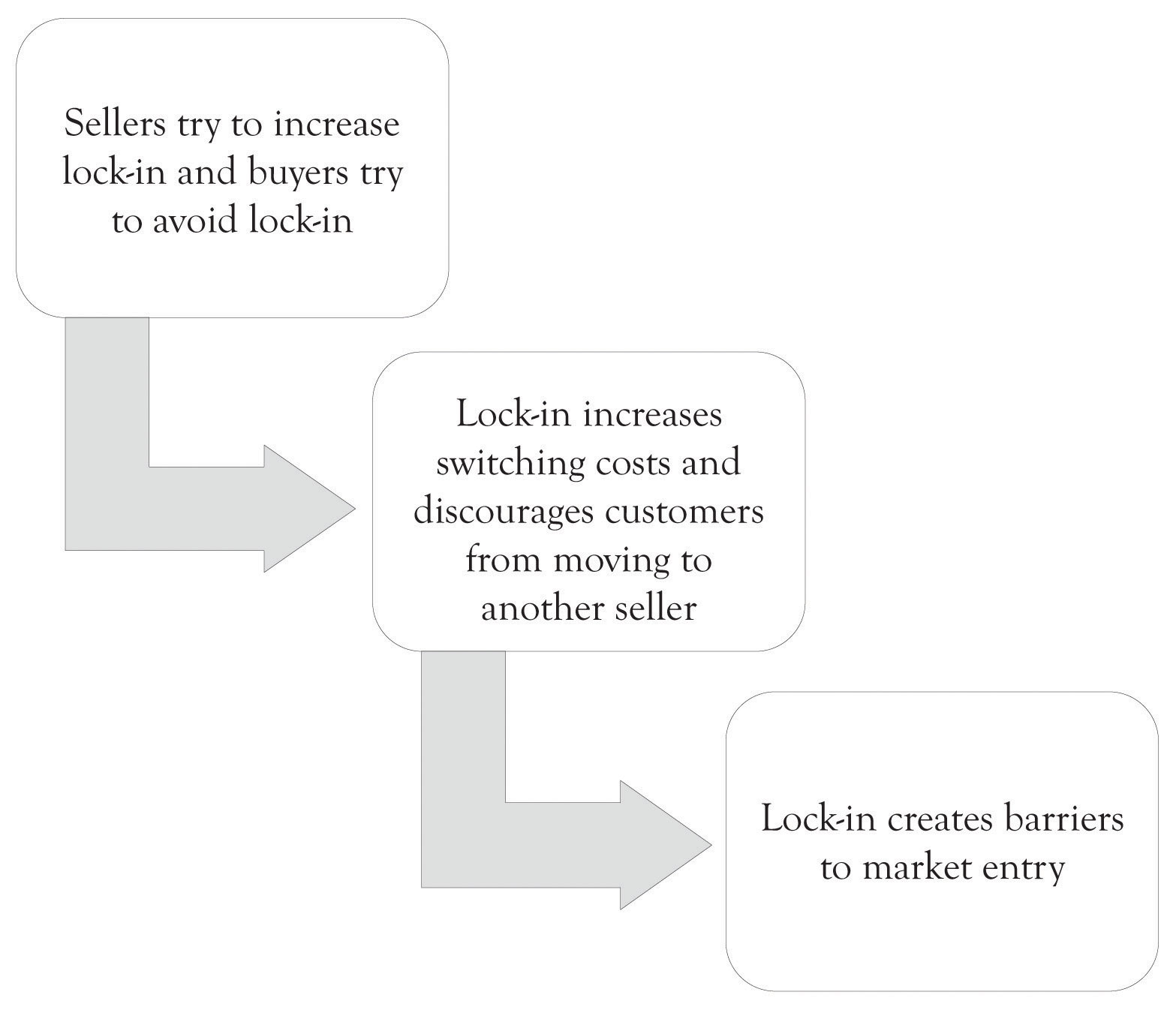10.7 Conclusion
In this chapter, we have discussed the concept of lock-in and identified various issues on the lock-in such as how companies can achieve it, the downside of it, and the lock-in index for practical use. We also have addressed the relationship between the lock-in and companies’ absorptive capacity within the framework of outsourcing. The key points are the following:
- Lock-in is pervasive. It is part of the normal day-to-day transactions in business.
- If you are a producer, then you need to take steps to acquire customers so that you can lock them in (see Figure 10.3 "Lock-In Issues"). This may include giving potential customers money, providing additional complimentary services, and developing attractive incentives for participation.
- Producers will always try to lock-in consumers. It is important that consumers try to get producers to offer incentives in order to offset present and future switching costs.
- The initial stage of bargaining is important because once the consumer has committed to a seller, then the lock-in has been cast. If you are a business and are considering outsourcing, then you will be locked-in as soon as you sign on the dotted line. In that case, you should look for second sources.
- When a company or an individual outsources, they are essentially merging with another entity that has a competitive advantage in a particular area. Identifying the processes where having a core competency is critical for the firm to survive and to engage in learn-by-doing activity in that area.
